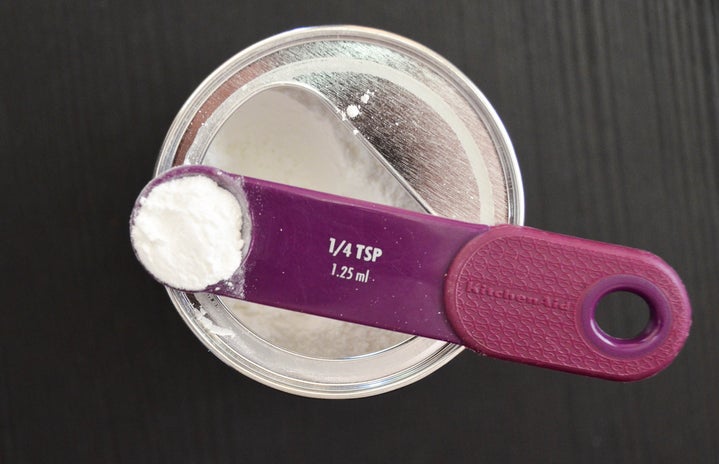If you are a college student, chances are you have seen cocaine use at parties, know people that have done it, or have participated yourself. Cocaine gives a feeling of alertness and an intense energy high most college students crave and don’t have enough. With its appearance of pure white powder and glamorization in the media, cocaine is an attractive drug to all kinds of audiences. I was in the black hole of TikTok one day when I accidentally stumbled on a video showing how cocaine is made. I was so surprised at what I saw that I continued to do my own research on how it is produced, who is making it, and how it connects to the American user. While I am certainly not condoning use, this article is meant to inform above all else. If using coke is a consistent part of your nightlife, an article probably won’t change your mind. However, I do encourage you to at least know what you are putting in your body, where it came from, and the implications of its use. Cocaine’s target audience is us – the college student. So, here’s what you should know about blow.
How It’s Made
Cocaine manufacturing mainly takes place in South and Central America. Bolivia, Columbia, and Peru are thought to be the three countries that head cocaine production (1). In these countries, cocaine is mainly made in make-shift labs in remote locations, hidden by forestry. To begin, coca leaves are spread on the floor and shredded into smaller pieces. To extract cocaine from coca leaves, cement is added, followed by sulfuric acid. The coca leaves are now a wet pulp that get soaked in gasoline for further extraction. To separate the cocaine from the gasoline, another chemical is needed: battery acid. With this addition, the mixture is now separated by densities: gasoline is on the top and the bottom 10% of the mixture is pure cocaine water. The cocaine water is siphoned manually by a worker into a separate container. The rest of the chemical mixture is then poured into the ground where it mainly flows into nearby water sources. The cocaine water is then strained and heated where it congeals to a bark-like substance. This is then sent to another lab where it is refined into powder. Read here to see an extensive list of 53 chemicals associated with the production of cocaine: https://www.emcdda.europa.eu/publications/eu-drug-markets/cocaine/production_en
The cocaine that lands in consumers’ hands is not “pure” cocaine. Rather, it is normally cut with other ingredients such as cornstarch and baking soda. To reduce production costs, sometimes the amount of cocaine is diminished, and it is cut with other chemicals that mimic the effects of cocaine such as amphetamine and heroin. Unless you have a lab to extract each ingredient, there is no way for a consumer to know what ingredients are in their cocaine, and the percentage of pure cocaine inside. Another thing cocaine is getting cut with: fentanyl.
Fentanyl
You’ve probably heard of fentanyl- the leading cause of overdoses in the United States. Fentanyl is 100 times more potent than morphine and as little as 2 milligrams is considered a lethal dose. For reference, below is a picture of 2mg of fentanyl next to a penny.
Cocaine is often made in labs that manufacture a variety of drugs, so fentanyl often finds its way into cocaine batches. And as you can see, even the smallest amount can be lethal. Other producers intentionally mix amounts of illegal fentanyl for profit. Fentanyl use and overdoses have skyrocketed in the last 2 years. Over 150 people die every day from overdoses related to synthetic opioids like fentanyl (2). If you are considering using cocaine or know friends that do, buy fentanyl test strips. They are affordable, work in minutes and can be found in places as easy as Amazon. And of course, consider carrying Narcan with you; Narcan can be found at local pharmacies and can be administered nasally.
Implications for Workers
While the head of cartels are making thousands a day off of cocaine production and distribution, the farmers growing and making cocaine, make less than $20 a day. These individuals who are doing drug cartels’ dirty work are breathing in toxic chemicals every day and make little pay. Cartels often own these farms that grow multiple crops, and their employees have no choice on what crops they pick, and the jobs they are assigned to. Farmers have spoken out anonymously and say that they have nothing to live off of, and trade cocaine for local groceries (3). Worse, it is their environment that is being polluted, and they are the ones without protection in the chance police raids take place. It is so easy for us to look down at these developing South American countries and be grateful that we don’t live among the same violence and injustice. However, we have to remember that we, as one of the biggest drug-using countries, propagate the very drug war we turn our noses up at.
Cocaine is a commonly used drug, especially among college students. It is easy to engage in party drugs when they are right in front of us; when we don’t have to think about where they came from or how they’re made. While knowing this information may not change your opinion on using cocaine, at the least I hope it emphasized that the nature of doing cocaine is that you never know what exactly is in your drug. So stay safe out there! With the current state of fentanyl overdoses, it is always smart to err on the side of caution.
Some short clips on cocaine production:
References:
- https://www.emcdda.europa.eu/publications/eu-drug-markets/cocaine/production_en
- https://www.cdc.gov/stopoverdose/fentanyl/index.html
- https://www.businessinsider.com/colombia-cocaine-coca-paste-farming-trade-value-2016-6#coca-leaf-the-material-in-cocaine-is-relatively-cheap-compared-to-the-end-product-1


